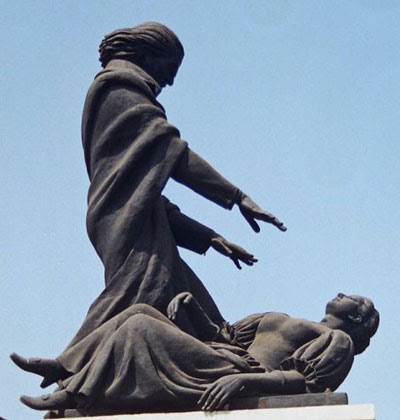GOA
The Azad Maidan,The Statue Of Abbe Faria,The Zuari bridge
The Azad Maidan
It is the small plot in Panjim town, a pavilion in the center presently built and in the middle is the statue of Dr. Tristao de Braganza Cunha, the former Goan Freedom Fighter, He was the ‘Valiant Hero of Goan Fight for Freedom’. Previously during Portuguese in 1847 the State of Afonso Albuquerque made of bronze and two meters tall was built, after conquering various sites in Goa which is now place in Museum at Old Goa. Close to this is one monument dedicated to those who fought to liberate the Goa from Portuguese Rule.
On the west side of the square is long broad building; behind this is a Police Headquarter; previously it was the former Portuguese army barracks and Military Headquarters which was built in 1832. Just further end of square is Menezes Braganza Institute having huge library, original known Vasco da Gama Institute built in 1871 to promote the Literature, Arts and Science, and in 1953 was renamed in respect of Luis de Menezes Braganza (1878 – 1938), a great crusader for social, religious and political.
Opposite to Institute, next to ferry terminal is a monument dedicate to the victims who died in 1901, when ferry drowned in Mandovi River going from Panjim to Verem, eighty one people died in this accident. This memorial was built Goan family living in Aden, since they have lost their relatives in this incident.
On the opposite of this square towards the finishing part of it, is the Government Printing Press and at the back of this full building in a big quadrangle view is conquered by the other State Government Offices.
Moving further on from here and taking the route on the opposite side of the square from Police Headquarters, walking little distance you reach to Municipal Garden.
The Statue Of Abbe Faria
The statue of Abbe Jose Custodia Faria, is that of a priest hypnotizing a woman and is located in a small square just near the Secretariat in Panjim. Abbe Faria was born in 1756 in Candolim and his childhood was quite eventful with his parents separated to become priest and nun respectively. He was bestowed priesthood in 1777 at Lisbon after completion of his education at Rome.
He was blamed for hatching a conspiracy to gather support for the Pinto revolts in 1787. He confided with the envoys of Tipu Sultan and French administrators at Paris to work out a strategy in order to end the Portuguese as well as the British reign in India. Failure of the Pinto Revolt compelled him to stay over and participate in the French Revolution in 1795 leading an army of revolutionaries against the atrocities of the National Convention.
He was blamed for hatching a conspiracy to gather support for the Pinto revolts in 1787. He confided with the envoys of Tipu Sultan and French administrators at Paris to work out a strategy in order to end the Portuguese as well as the British reign in India. Failure of the Pinto Revolt compelled him to stay over and participate in the French Revolution in 1795 leading an army of revolutionaries against the atrocities of the National Convention.
It was at this that the he embarked on the stage of his career that would make him famous as the originator of hypnotism through suggestions. It is this achievement that is commemorated in this statue. He died in Paris in 1819 a pauper, but this was not to be the end of his story. Alexender Duman writing his Count of Monte Cristo fifty years later included in his novel a prisoner in the Chateau known as the Mad Monk. He gave this character the name of Abbe through hardly on the true facts of his adventurous life.
The most crucial phase of his career arose when he was widely known as the originator of Hypnotism by way of suggestions. This feature is displayed in the Abbe Faria Statue at Panjim. Even his death at Paris in 1819 made him immortal in history, as he was included as a character in the famous novel, The Count of Monte Cristo by Alexander Duman who referred to him as the Mad Monk, mostly based on the adventurous life led by Abbe Faria.
The Zuari bridge
There are two major rivers in Goa, the Zuari River and the Mandovi River. On the Southern Bank of the Mandovi river lies the new city of Goa called the Panaji formerly known as Panjim during the Portuguese regime.
After liberation of Goa in 1962 two major Bridges were built across the Zuari and Mandovi river, and now the Konkan Railway bridge runs along side the Zuari Bridge.
The Zuari bridge on the Zuari river is one of the most scenic and beautiful spots in Goa that links the capital city of Panaji in North Goa with Vasco da Gama and the Mormugao port in South Goa. It is also considered a major link for two important districts of Goa.
After liberation of Goa in 1962 two major Bridges were built across the Zuari and Mandovi river, and now the Konkan Railway bridge runs along side the Zuari Bridge.
The Zuari bridge on the Zuari river is one of the most scenic and beautiful spots in Goa that links the capital city of Panaji in North Goa with Vasco da Gama and the Mormugao port in South Goa. It is also considered a major link for two important districts of Goa.





.jpg)
.jpg)
No comments:
Post a Comment